Best cycling base layers: A buyer's guide
Our guide to cycling base layers, including long sleeve, short sleeve and sleeveless base layers, as well as what you should look for in terms of fit and materials
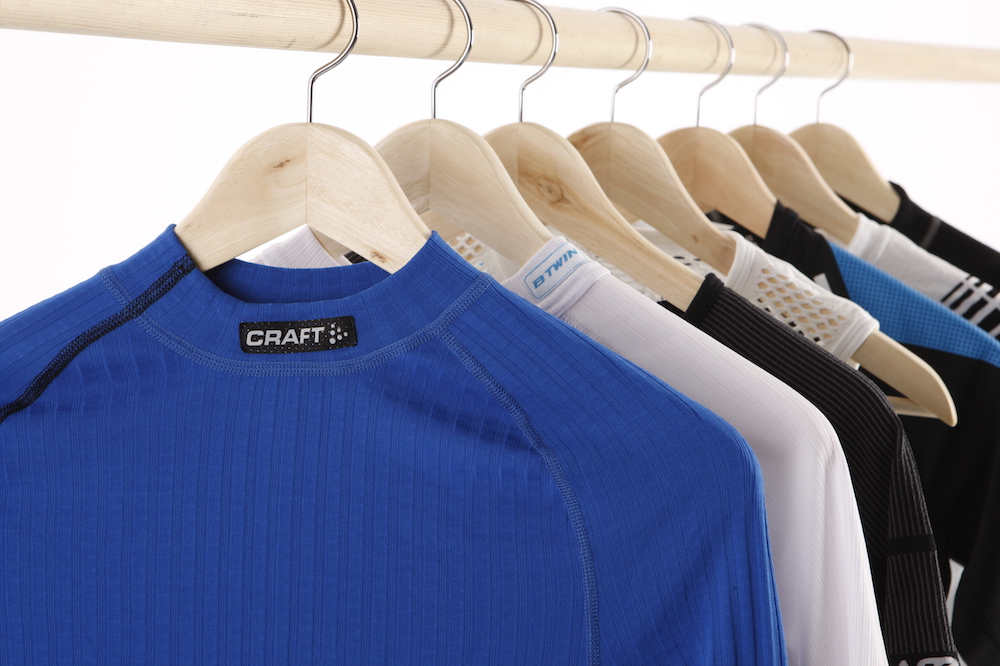
Cycling base layers are a fundamental part of any rider’s wardrobe but there’s more to this commonplace garment than initially meets the eye.
Choose well and the right base layer will reward you with superior moisture management and temperature control. And as you know, keeping cool when it's hot and staying warm when it's not can really impact just how much you enjoy the ride.
To help you in your search for the best cycling base layer, we've selected a few of favourite products.
Below our recommendations is our buyer's guide telling you what you need to know to choose the optimum base layer whatever the weather conditions you'll be riding in.
We've broken our product listing into winter weight base layers and summer base layers. There are important differences between the two categories, which we've explained in the buyer's guide section.
Cycling base layers: Our pick of the best
Winter weight base layers
Specifications
Reasons to buy
Reasons to avoid
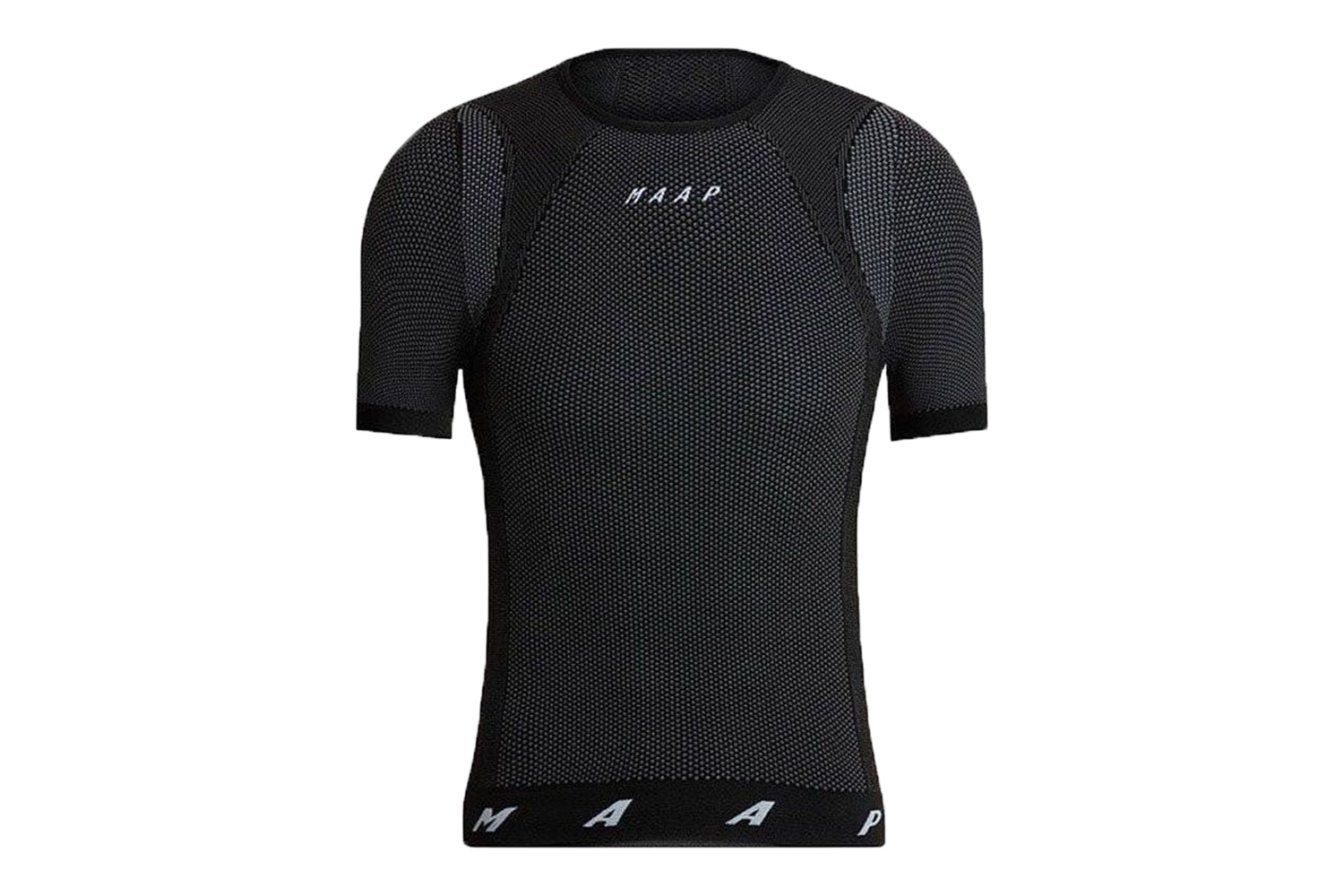
Warm enough for winter, slim enough for summer and it packs a big technical punch. It's safe to say we're big fans of MAAP's Seamless Base Layer tee, although without sleeves (it is designed by Aussies after all) you may need to wear arm warmers to feel comfortable.
There's a huge amount of stretch, so although it looks small out of the box, fit and length provide plenty of coverage to keep you warm.
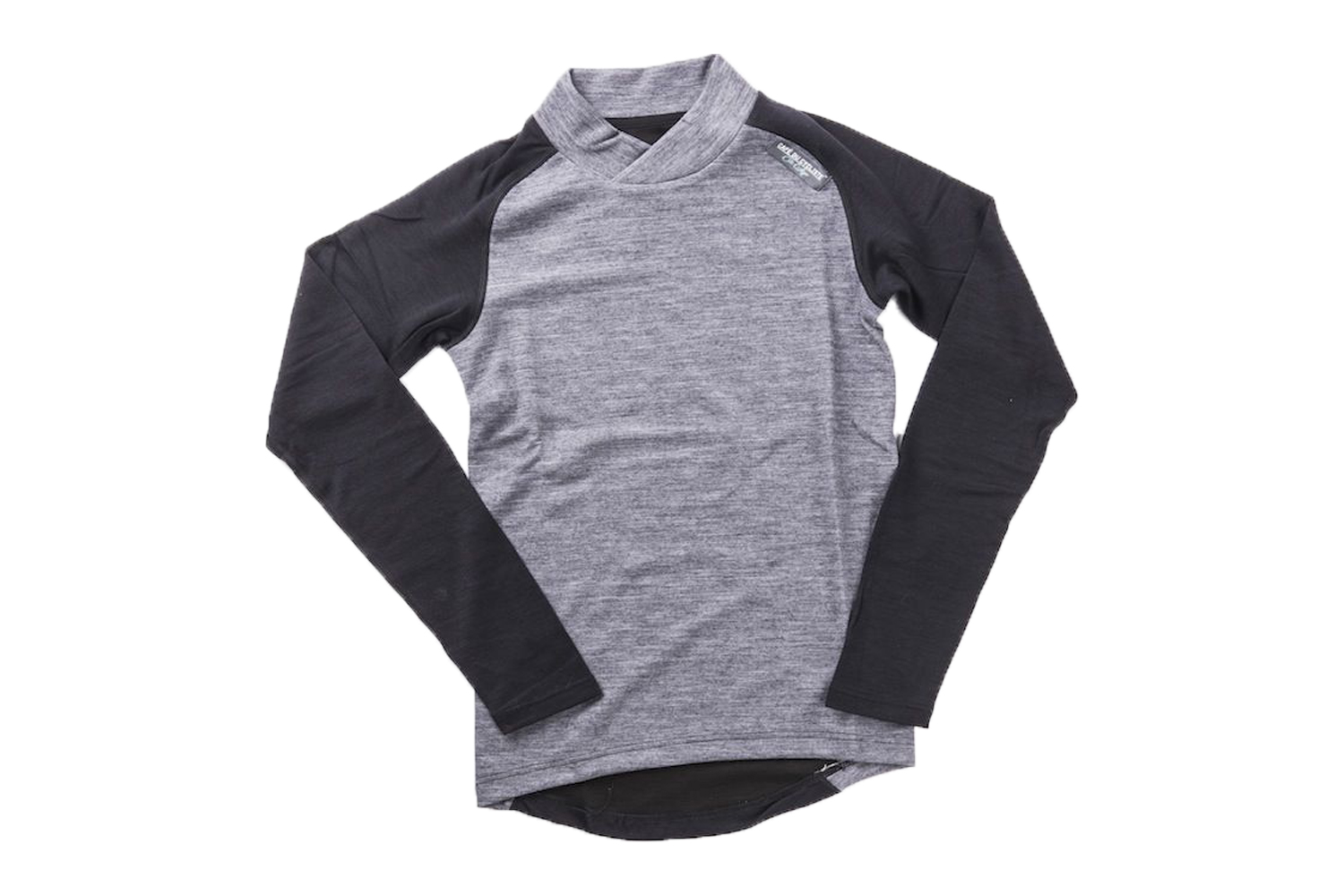
Specifications
Reasons to buy
Reasons to avoid
This is probably one of the most comfortable base layers we've worn. It sits a little looser but it's super soft, plus it has a high neck to keep the wind out and you super snug.
The Merino blend and thick material mean that the Cosette is super-warm and low odour too, while the long arms make it comfortable and ensure no gaps at the wrists when you're stretched out while riding.
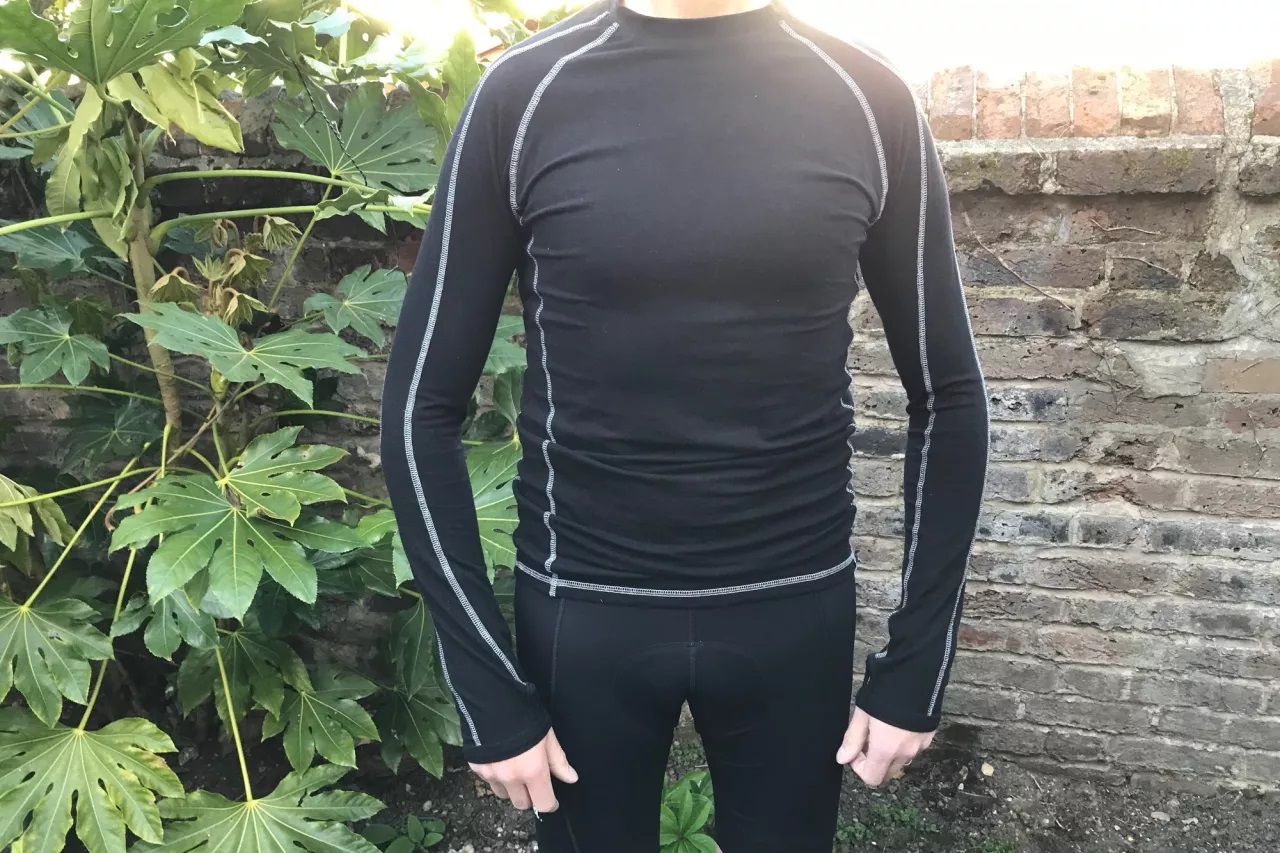
Specifications
Reasons to buy
Reasons to avoid
Eco friendly and more absorbent than cotton, bamboo is high bulk and odour resistant and the elastane content gives the Reflex top stretch. BAM's clothing is not cycling-specific but it's a good option for riding nevertheless, although we'd prefer it if the sleeves didn't have thumb loops.
Weight-wise the bamboo fabric is somewhere between synthetics and cotton, so the Reflex weighs a bit more than many cycling base layers. This does mean that you can usually dispense with one of your other layers and still stay warm though. There's good stretch, although the sizing is a bit less skin-tight than most cycling kit.
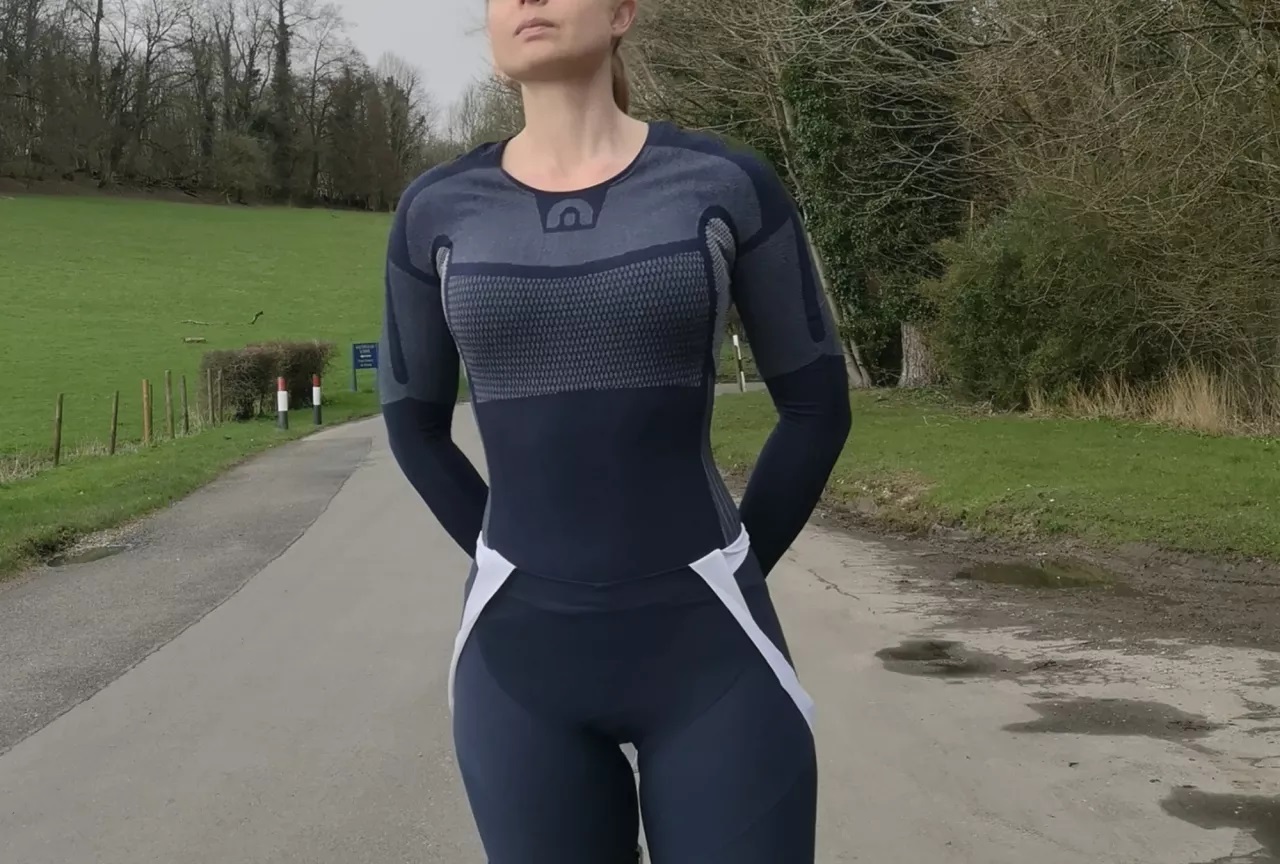
Specifications
Reasons to buy
Reasons to avoid
Designed specifically for cycling, the Dyrnamo base layer is body mapped so it's warm where it needs to be with more vented areas out of the wind at the rear and under the armpits to keep you comfortable.
There's loads of stretch, so it's a close fit but there's good length to the body, so you won't get any cold spots at the lower back. The design is seamless, so there's nothing to rub or itch. Odour control and breathability are good. Although the Megmeister top can feel damp it doesn't get cold but it is an expensive option.
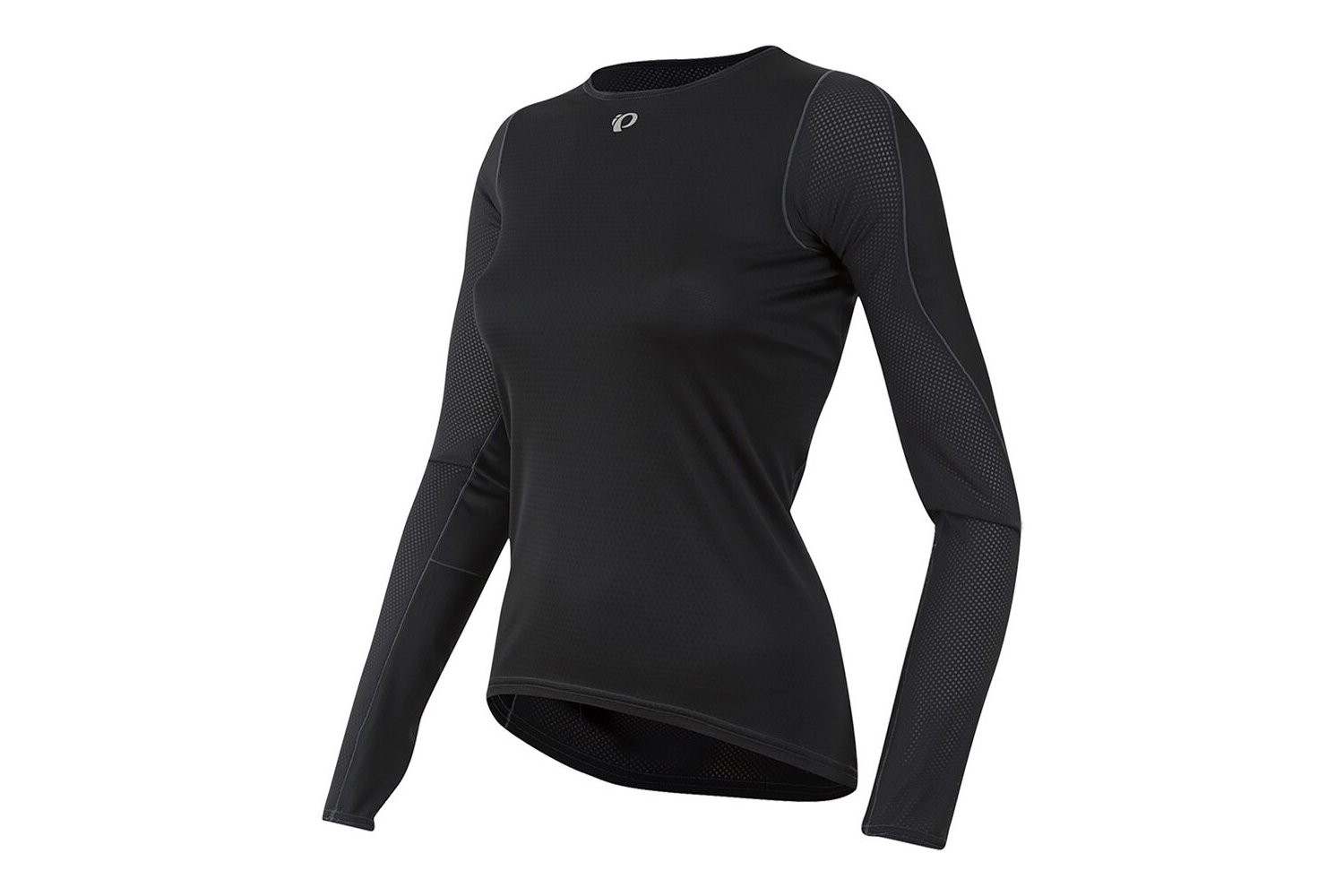
Specifications
Reasons to buy
Reasons to avoid
First and foremost, the Pearl Izumi Transfer Wool base layer has a great fit. It's cut specific to riding a bike, with features like rotated arms and, although it's not fully merino, it does a really good job of keeping you warm.
It's also jammed packed with test-winning, technical features, including anti-odour and great wicking capabilities. We really liked the thumb loops on this base layer, which helped keep the sleeves in place, so there were no cold gaps between them and our winter gloves.
Summer weight base layers
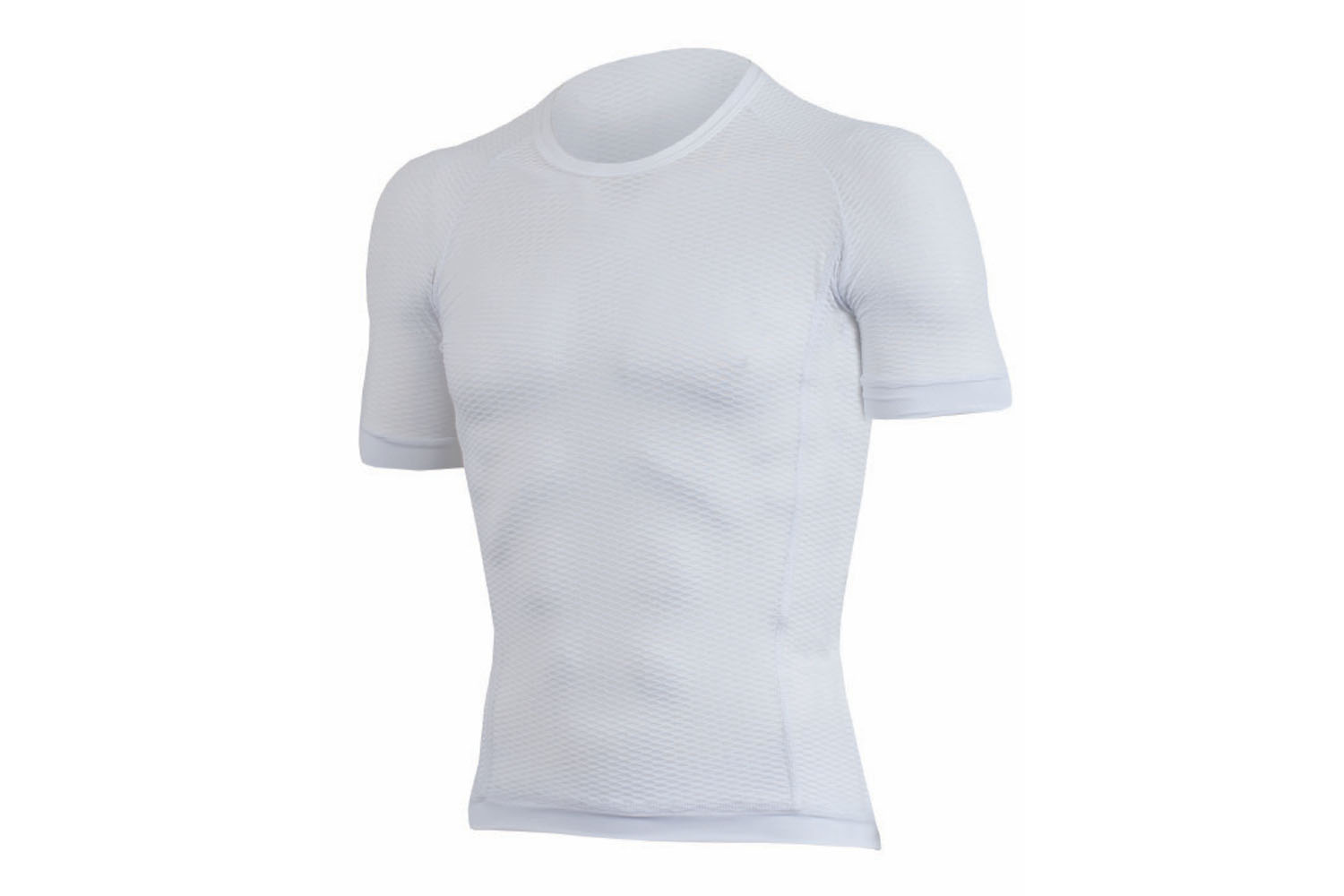
Specifications
Reasons to buy
Reasons to avoid
This UK-made super lightweight base layer offers great value for money. On test we found that it was both lightweight and stretchy. Both these properties, when combined with the anatomical-shaped panels, led to a snug fit - just what you're looking for in base layer.
Other details include a dropped tail and seams that while not flatlocked are held directly against the body to prevent any unwanted rubbing.
Like all good summer base layers the Lusso Race Mesh wicks away sweat while on chilly mornings also doing a solid job of trapping warm air. We also found that it washed well, coming out the machine smelling nice and fresh - not something that can be said for all synthetic base layers.
The mesh fabric is pretty delicate and somewhat prone to pulls but this doesn't affect its performance.
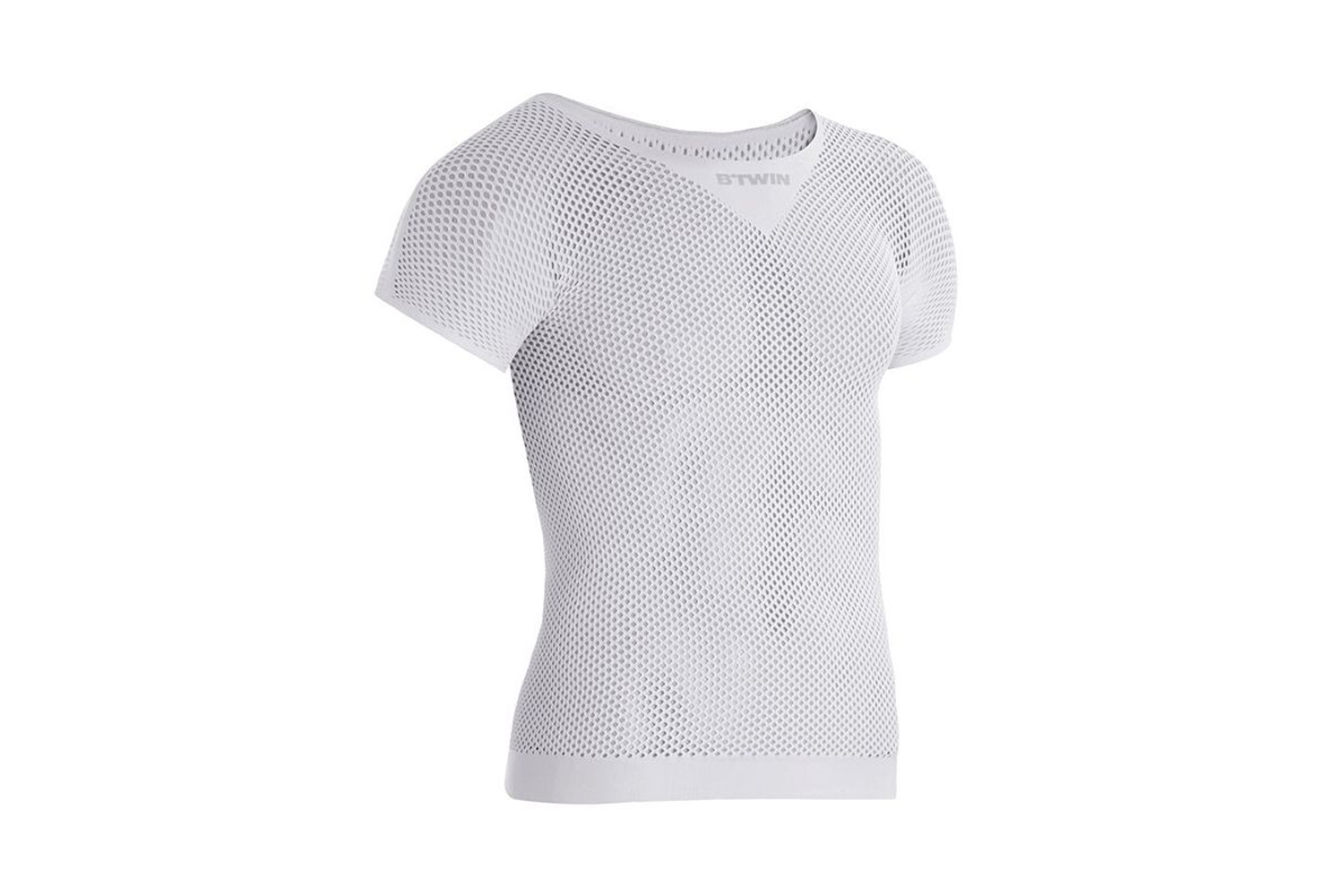
Specifications
Reasons to buy
Reasons to avoid
This base layer from Decathlon is a lightweight option that's mostly designed to provide comfort and minor insulation on warm rides. It comes in a single size. Happily, the fabric has a decent stretch to it and and it's soft – although fit may still be an issue if you're at the extreme end of riders' size range and it's perhaps not as soft as options from more premium brands. That said, it's really the price that's drawing people to this product.
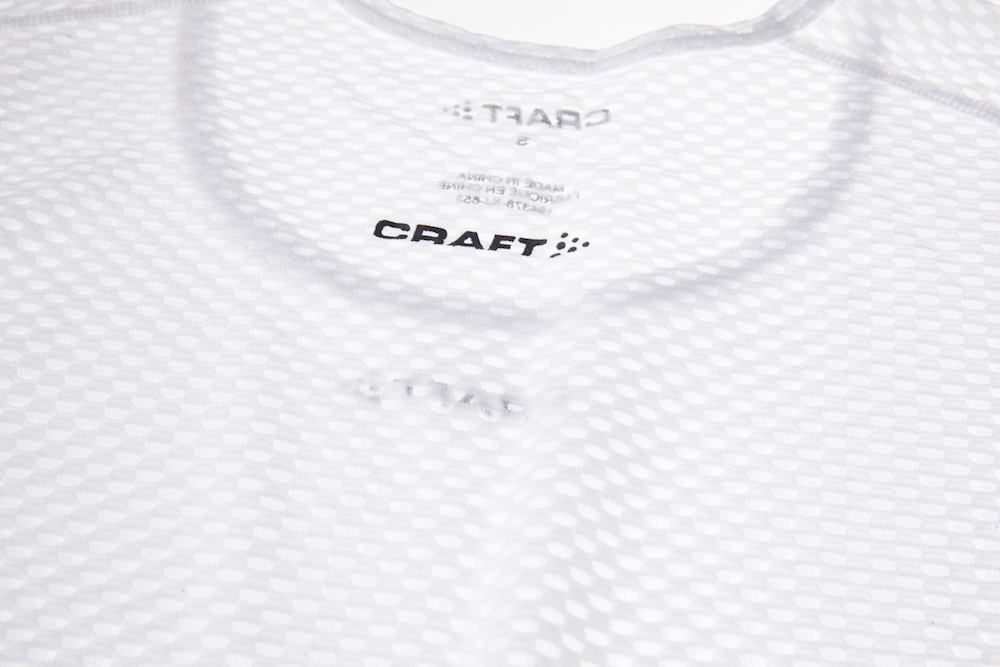
Specifications
Reasons to buy
Reasons to avoid
A perennial classic, the Craft Superlight is an ideal weight for hot summer rides and works really well, although it can accumulate body odour. It's really durable and should last for years, washing up well and resisting staining.
The six channel fabric wicks sweat away well and stays comfortably dry however hot the weather gets. It's so lightweight that it doesn't impede airflow and the couple of seams are flatlocked, so they don't rub.
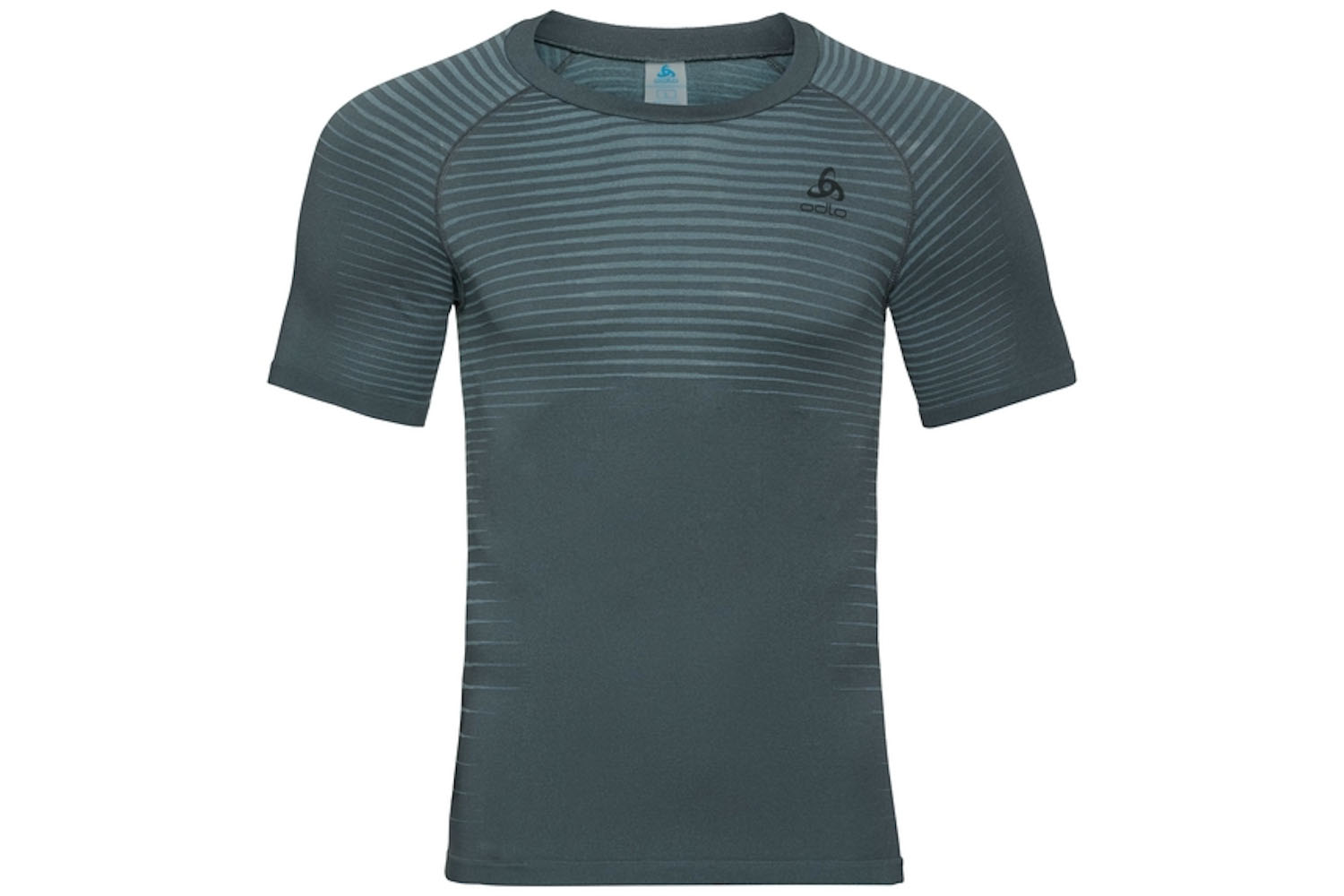
Specifications
Reasons to buy
Reasons to avoid
With high breathability and body mapped fabric, the Odlo Performance Light base layer is comfortable for summer riding - or, since it's not cycling-specific, it can be worn for other higher intensity sports.
There's good length to the body and the design is practically seam-free, with no seams in the body and just a couple over the shoulders of the raglan sleeves. There's extra fabric density over the belly to help keep your core warmer if there's a cooler breeze and enough length to keep your lower back covered as you ride.
Best Cycling Base Layers Buyers Guide
How should a cycling base layer fit?
Like all clothing used for road riding, a performance cycling base layer should sit close to the skin. Its tight fitting properties make it far more comfortable when you're working hard and sweating lots, as it will wick sweat away from your body effectively.
Should you have the misfortune of falling off, it plays a part in preventing road rash as well, sliding between your jersey and your skin and adding an extra layer of protection.
A tight fit will also make the product more comfortable and less prone to rubbing or chafing as it should sit tight to the skin and not move.
Necklines are particular important, too. Some will have a low cut neck to avoid discomfort and rubbing. Some heavy-duty thermals will come a high neck, which will add warmth when cycling in the winter, obviating the need for a buff and helping fill any gaps at the collar of your winter jacket.
Checking the length of both the arms and the torso is also important and a base layer should be generous in both areas. This should mean that your wrists are covered and there are no gaps between your base layer and your gloves or your base layer and your bib shorts.
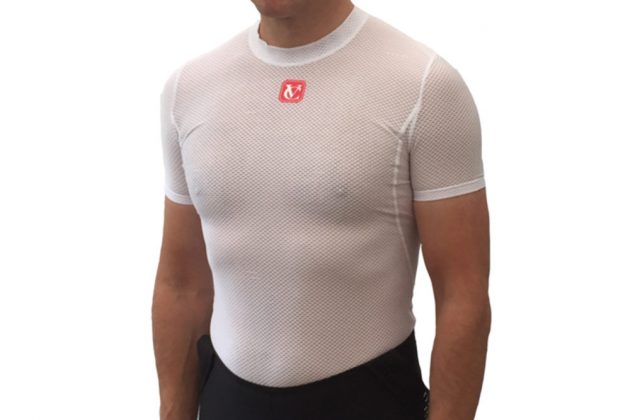
Which cycling base layers are best - long sleeve or short sleeve?
This is a big question for base layer lovers and the answer is largely dictated by the season.
In the winter months, you’re definitely going to want to prioritise long sleeves, purely for the additional coverage and extra warmth that they offer - out in the wind, your arms and hands are the first part of you which is likely to get cold, and cold hands can make it difficult to use your controls.
If you like the added comfort offered by base layers then short sleeved, or even no sleeved options, are great for the warmer months, helping to wick sweat away from your body. Plus they can be useful if the mornings are chilly.
What are the best cycling base layers made from?
This is one of the more important questions to ask when buying a base layer. The material will affect a product's comfort, how much it smells and, more importantly, how warm it will keep you.
Basically, there are two kinds of material that a base layer can be made off – either man made or natural.
If you’d rather go au naturelle then you’ll be looking to get a product made of Merino wool, primarily coming from New Zealand or Australia. Look out for Merino labelled as non-mulesed. Mulesing is a process which stops flies laying eggs around the sheep's rear end, but it's uncomfortable for the sheep and considered poor welfare practice.
Merino wool has heaps of great attributes, which makes it an awesome fabric for base layers. For starters, it’s largely stink-free, meaning you’ll get more rides out of it for each wash. This obviously has benefits if you’re riding lots, or more than once each day.
It’s also fast drying, which is great because unlike man made products, it doesn’t wick sweat away particularly well and can become very damp, very quickly. Happily, it’s a great insulator, though, even if it is wet.
Man-made materials are typically the opposite. They wick sweat away well, but tend to be smellier and need washing more. They're often not quite as warm as the thicker Merino alternatives.
Both Merino and man-made base layers have different grades of thickness so you can get the right one for you. If you tend to get very warm when riding then naturally it makes sense to get a thinner layer and vice versa.
With so many options available, it makes sense to have several layers that you can circulate, depending on the weather. It's worth investing in a good quality base layer too, as it should serve you well over many rides.
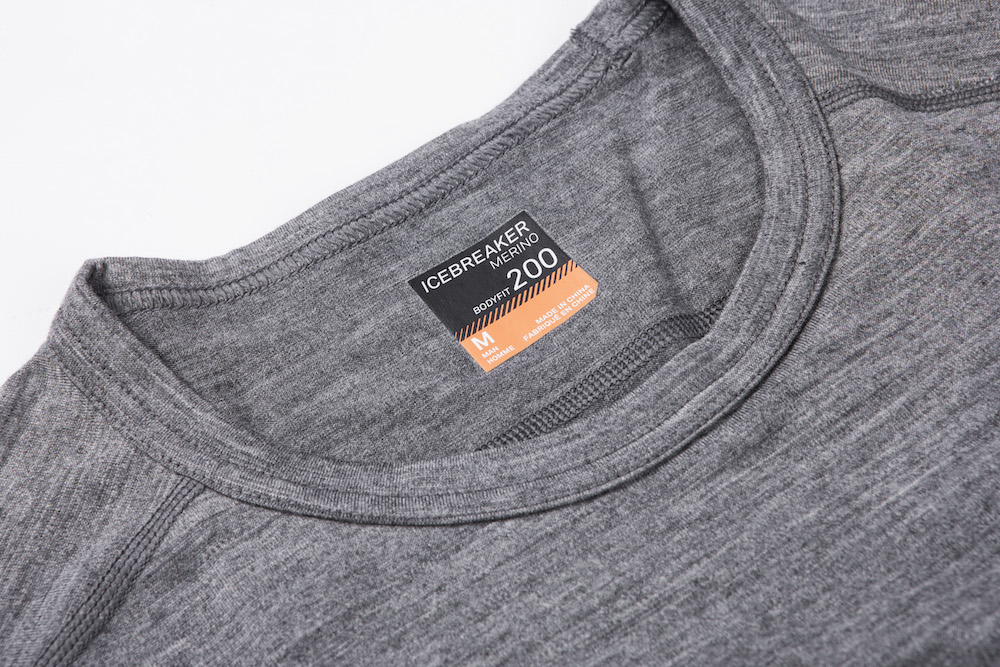
Get The Leadout Newsletter
The latest race content, interviews, features, reviews and expert buying guides, direct to your inbox!
-
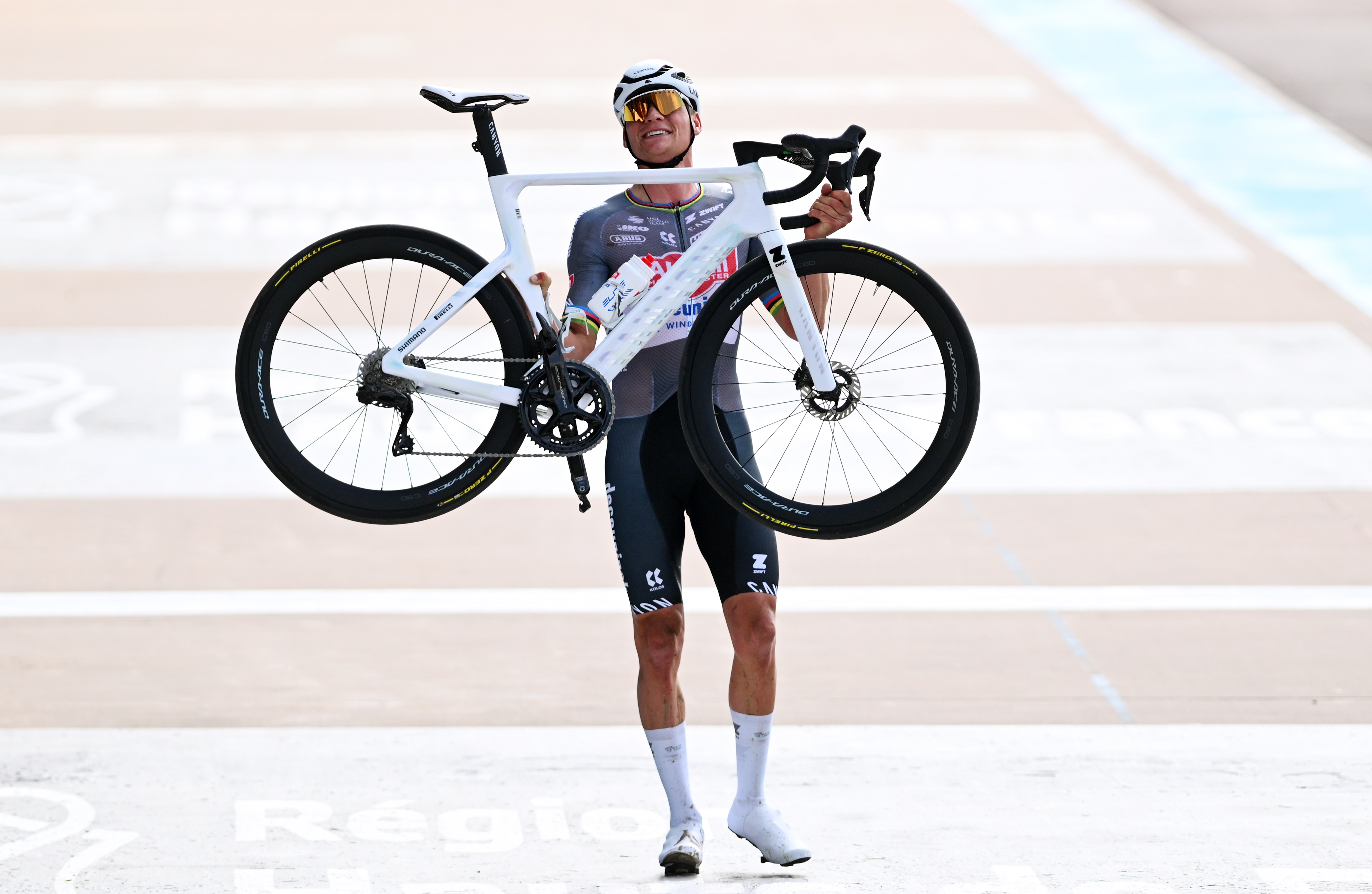 Mathieu van der Poel secures Paris-Roubaix hat-trick after epic duel with Tadej Pogačar
Mathieu van der Poel secures Paris-Roubaix hat-trick after epic duel with Tadej PogačarDutchman takes his third win in a row after Pogačar crashes on the cobbles, while Mads Pedersen finishes third
By Peter Cossins Published
-
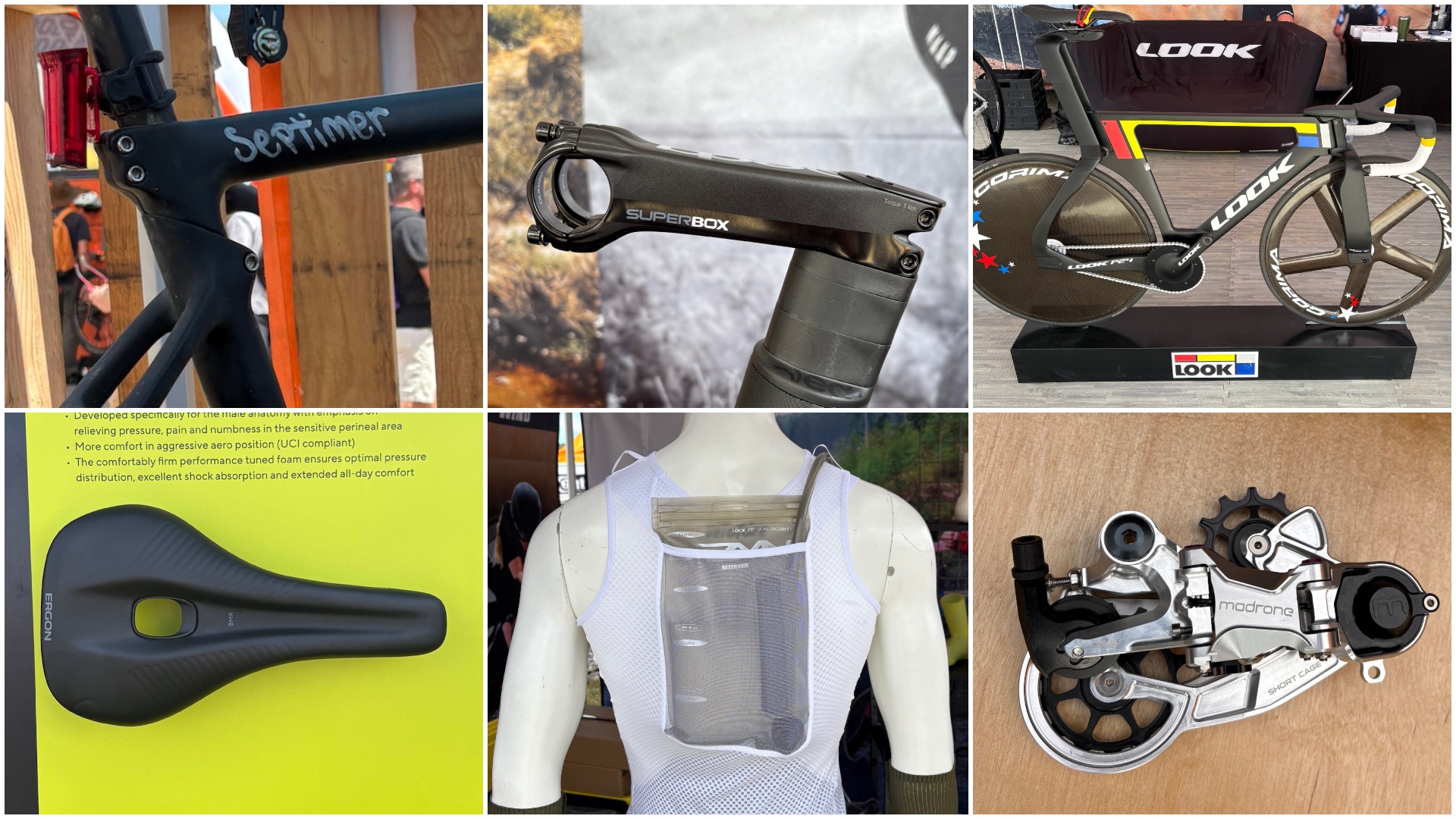 The Sea Otter Classic: sights and sounds from the biggest bike gathering in North America - Part 1
The Sea Otter Classic: sights and sounds from the biggest bike gathering in North America - Part 1Odds and ends that run the gamut, from a $13,000 frameset to armoured kit and new hydro-vests
By Tyler Boucher Published